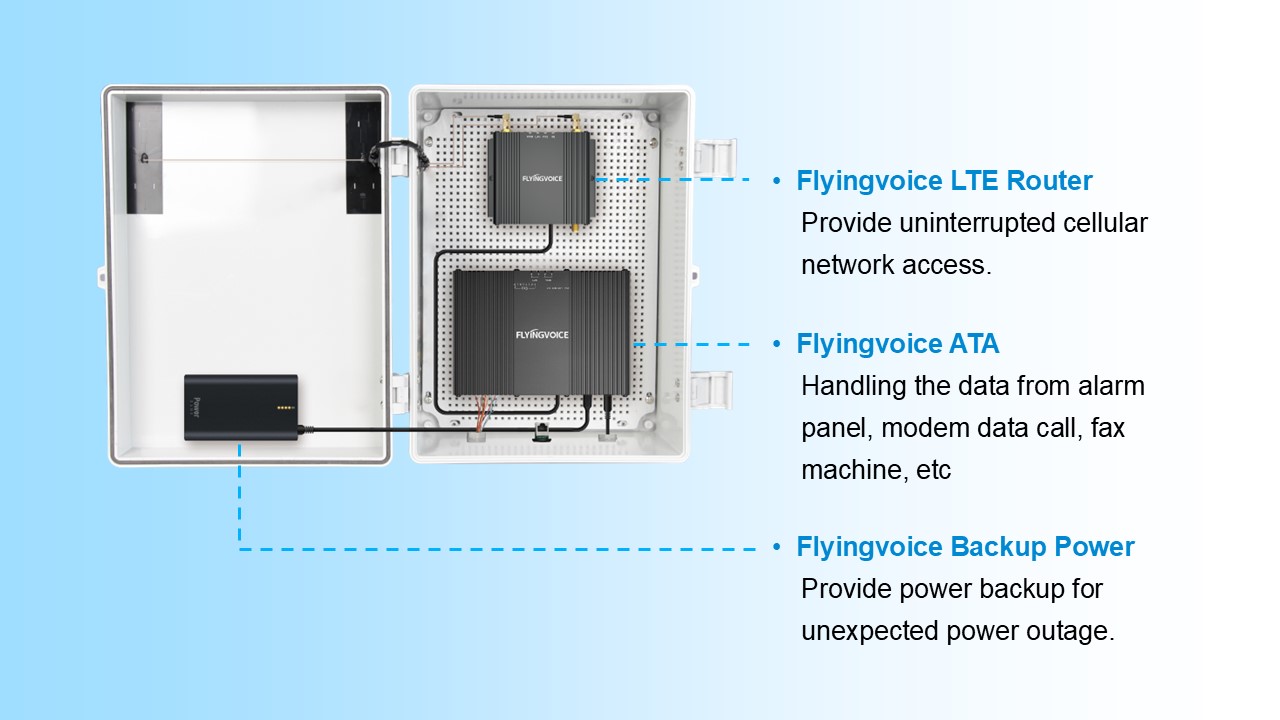What is VoLTE?
VoLTE stands for Voice over Long-term Evolution. Utilizing the IMS (IP Multimedia Subsystem) technology is a specific type of VoIP service designed into the LTE standard, which enables users to make voice calls while simultaneously using the LTE data network.
VoLTE is specially designed for 4G LTE networks and is available on LTE and 5G mobile communication technology. Telecom providers in the United States have been shut down 3G networks a few years ago and maintain 4G LTE and 5G cellular networks simultaneously. Apparently, LTE will remain mainstream for a long time to come.Minimize imageEdit imageDelete image

What are the differences between VoLTE and VoIP?
VoIP, we have been familiar with this protocol, it is a telephony technology that makes voice calls via an internet connection instead of a POTS line or any physical connection. Both VoIP and VoLTE are designed to provide high-definition Voice through IP-based networks, there are several distinctions as follows:
Network Media
VoLTE operates exclusively on 4G LTE and 5G mobile cellular networks, according to VoLTE voice quality control, there is a dedicated bandwidth for voice calls. Compared with VoLTE, VoIP can run over any internet connection, including Wi-Fi, broadband, or mobile data networks.
Voice Codec
A Codec will convert an analog voice signal to a digital encoded signal at the transmitter and later decode the digital version to analog at the receiver. Codecs are designed for high-quality and efficient coding of voice and enhanced packet-loss concealment for challenging radio channel conditions. Especially in VoIP, situations are more complicated. Different codecs have different sound quality and require different bandwidths and computations.
The following codecs are available for voice mobile services. Also, the Enhanced Voice Service (EVS) codec is the latest one that was introduced in 3GPP release 12.
- Enhanced Full-Rate (EFR)
- AMR Narrowband (AMR-NB)
- AMR Wideband (AMR-WB)
- Extended AMR-WB (AMR-WB+)
- Enhanced Voice Service (EVS)

The most popular VoIP Codecs are:
- G.711: G.711 format is considered the best codec for interacting with the PSTN landline network. G.711 supports limited frequencies between 300-3,400 Hz.
- G.722: This wideband codec offers a high bitrate with high bandwidth requirements, and it supports from 50-7000 Hz–capable of HD voice
- G.722.2 (AMR-WB): This wideband VoIP codec can shift between a 48, 56, or 64 Kbps bitrate, depending on how much bandwidth the telephone network has available
- G.729: G.729 offers narrowband sound quality with a low bitrate–just 8 Kbps. The low bitrate means this codec consumes the least bandwidth of any on this list.
- Opus: An ultra-wideband codec, Opus supports from 50-20,000 Hz along with a remarkably high sample rate. This codec is also flexible, with a bitrate ranging from 6-510 Kbps and bandwidth that adapts to network availability.
Operation Condition
When using VoLTE devices, it is required that the device supports VoLTE functionality and a VoLTE-compatible SIM card. The functional configuration of VoLTE is very simple, and people can use it directly just like we used telephone or mobile phones in the past. Configurations are done on the operator side.
VoIP functionality is generally divided into on-premise deployment (local) and host deployment (cloud). Take Cloud PBX as an example. Firstly, it is necessary to ensure that VoIP devices can access the internet. Then assign SIP accounts to VoIP devices from Cloud PBX, and the devices register accounts to Cloud PBX. If the device needs to connect to any direct call number, Cloud PBX needs to provide additional SIP trunk or PSTN addressing functions, which will also incur additional costs.
It seems that the Operation Condition for VoLTE is simpler.
Reliability
Both technologies are based on IP-based voice calling technology, which means their call quality and reliability are significantly affected by the network environment eventually. When VoLTE is used in mobile devices, even though the coverage area of LTE is already very wide, the quality of calls may still be affected during moving. If VoLTE devices are used in fixed locations, such as VoLTE phones, the call quality and reliability can be guaranteed at a much better level.
VoIP offers a wide range of network access options, including Wi-Fi, broadband, and cellular, all of which have different network qualities. Overall, Simply assuming that VoIP is more volatile than VoLTE is wrong, using equipment in a fixed location is more reliable than in a moving situation.
Scalability
VoLTE devices will need to use SIM cards, whether it is physical cards or eSIM, which are one-to-one relationships. VoLTE offers superior scalability for emergency communications due to its integration with cellular networks. As 5G technology expands, VoLTE-enabled devices will seamlessly transition to faster, more reliable networks.
VoIP solutions offer unparalleled scalability, making them suitable for small startups and enterprises. As companies grow faster team members can quickly update VoIP systems with new users or features to accommodate changing needs.
Cost considerations
VoLTE charges for voice services depending on the strategy of telecom providers. VoIP charges are mostly based on the service fees, which can be based on call time or the entire set.
Overall, VoLTE and VoIP functionality is more cost-effective in the long run compared to traditional POTS systems. The reduced maintenance requirements, lower operational costs, and extended equipment lifespan contribute to substantial savings over time.

Be careful when you select the solution for POTS replacement
POTS over VoLTE and POTS over LTE look like similar things they are designed for two different usage scenarios. POTS over VoLTE, which means that the voice data that comes from POTS devices travels through the VoLTE channel. POTS over LTE is known as POTS data transferring through the LTE network, but the fact is that the data format is under the VoIP framework.
From my perspective, it seems that both technologies are alternative POTS solutions. It is partially correct. When selecting between VoLTE and VoIP as a POTS line replacement, evaluating specific business needs, existing infrastructure, and long-term communication goals is crucial.
In some voice-only application scenarios, such as emergency life calls, analog phone replacement, and elevator phone, both have their advantages and the difficulty of replacement is relatively small.
But when encountering applications such as alarms, modem, fax, etc., VoLTE encounters more problems. Because the voice codec in VoLTE requires more compression, there will be a higher rate of failing the Alarm, FAX, and modem call.
VoLTE is managed by telecom providers, so it is hard to add features on VoLTE to solve Alarm, FAX, and modem call issues. In this case VoIP technology is more flexible and open for Secondary development. As long as the development is compatible with VoIP platforms, there is some way to improve Alarm, FAX, and modem call performance over VoIP.
Why Flyingvoice
After more than 10 years of development, Flyingvoice has rich industry experience in POTS solutions that provide both VoIP and VoLTE, we understand well customers’ need for POTS replacement. Flyingvoice develops a specified solution inside the ATA to handle the original analog signal properly (aimed for Alarm, FAX, and modem calls) and reduce the failure rate. This is very promising and keeps the alarm, FAX and modem call running in the traditional way as they did in past decades.
Flyingvoice provides one-stop hardware for POTS replacement. Firstly, we provide a POTS box which includes an industrial LTE router LM150 for internet access, a power bank for battery backup, and ATA gateway PR08 to provide the traditional dial tone to legacy terminals.

If you want a more compact solution we also have a better option, an All-in-One POTS replacement device - LM152. It supports the major feature that POTS Box (PR08 and LM150) does, it also integrates VoLTE and VoIP at the same time. It is a game changer for the POTS replacement market.
Sincerely, We want to use our year's experience to help you leap VoIP smoothly and steadily, don’t wait until the last minute, it is wisdom to take your action with Flyingvoice today!













 Back to list
Back to list









